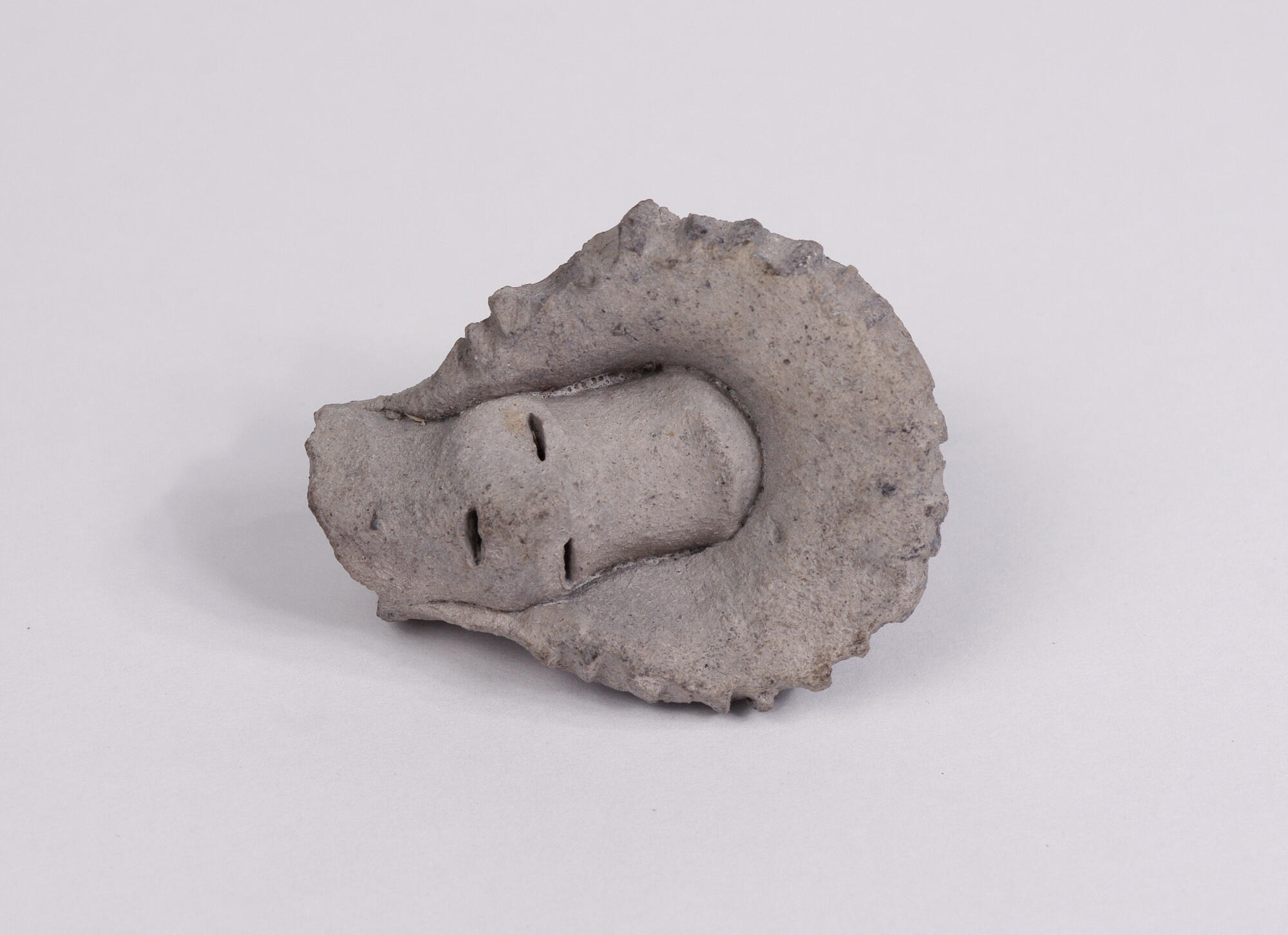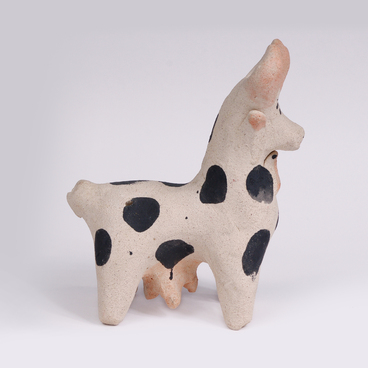This head of a woman in a kokoshnik is the only surviving element of an ancient toy. It was found during excavations in Stary Oskol. An unknown master created this toy approximately in the 18th century. It was impossible to find the body that had been torn off, but the piece is still of interest. It helps us understand how the shapes of such toys were changing over time.
Special features distinguished the figures of women made before the end of the 18th century: their faces were molded in relief. Their eyes and mouth were pierced with a thin stick that was lentil-shaped in cross section (if you look at the tip of this instrument, it looks like a lentil grain).
To form the face, artists often applied a small roll of clay to the head. They pressed this roll with one motion of their thumb and forefinger to create some kind of cheeks and a nose. According to the other, simpler technology, the clay was pulled from the toy’s forehead or neck. Sometimes artists made a barely noticeable ‘pinch, ’ symbolically marking a nose.
At the end of the 19th — beginning of the 20th century, the features of women became much simpler. Craftsmen began to leave smooth faces with three slits, which symbolized eyes and mouth. The slits were made with a stick that was flat or round in cross section. Very rarely, they were formed with stamps.
Hereditary craft artists Olga and Natalia Goncharova did the same with their first toys. By 1991, they had replaced three slits with three dots. A red dot meant a mouth, and two black or blue dots meant the eyes. Then the toys also got eyebrows. At the same time, a clay toy woman still wore a kokoshnik: in the old times, it was an indispensable attribute of a married woman.
Researcher Natalia Nikishina wrote that at the turn of the 19th century, the figures of young damsels also got a hat, similar to a poke bonnet. It combined the features of a bonnet and a hat, and had wide margins, gradually tapering to the back of the head. At that time in Stary Oskol culture and economy were on the rise. People could afford to pay a lot of attention to appearance, and poke bonnets became popular in cities and villages. This was also reflected in the toy.
Special features distinguished the figures of women made before the end of the 18th century: their faces were molded in relief. Their eyes and mouth were pierced with a thin stick that was lentil-shaped in cross section (if you look at the tip of this instrument, it looks like a lentil grain).
To form the face, artists often applied a small roll of clay to the head. They pressed this roll with one motion of their thumb and forefinger to create some kind of cheeks and a nose. According to the other, simpler technology, the clay was pulled from the toy’s forehead or neck. Sometimes artists made a barely noticeable ‘pinch, ’ symbolically marking a nose.
At the end of the 19th — beginning of the 20th century, the features of women became much simpler. Craftsmen began to leave smooth faces with three slits, which symbolized eyes and mouth. The slits were made with a stick that was flat or round in cross section. Very rarely, they were formed with stamps.
Hereditary craft artists Olga and Natalia Goncharova did the same with their first toys. By 1991, they had replaced three slits with three dots. A red dot meant a mouth, and two black or blue dots meant the eyes. Then the toys also got eyebrows. At the same time, a clay toy woman still wore a kokoshnik: in the old times, it was an indispensable attribute of a married woman.
Researcher Natalia Nikishina wrote that at the turn of the 19th century, the figures of young damsels also got a hat, similar to a poke bonnet. It combined the features of a bonnet and a hat, and had wide margins, gradually tapering to the back of the head. At that time in Stary Oskol culture and economy were on the rise. People could afford to pay a lot of attention to appearance, and poke bonnets became popular in cities and villages. This was also reflected in the toy.



